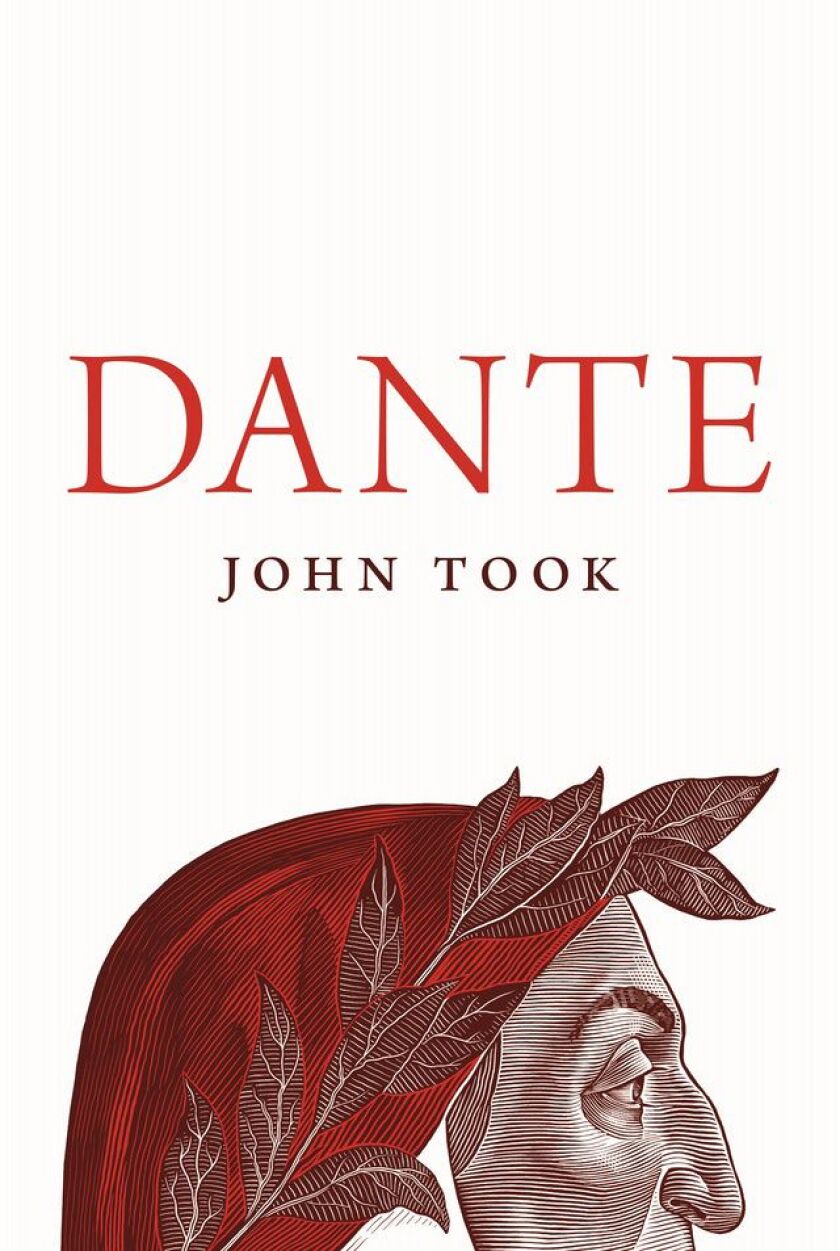John Took’s new book “Dante” is very heavy lifting. From the first sentence — “Exemplary in respect of just about everything coming next on the banks of the Arno over the next few decades was the case of Buondelmonte de’Buondelmonti on the threshold of the thirteenth century.” — it is a waist-deep slog through the muddiest of academic creeks.
Pressing forward, I grew to hate him. Just for taking something so valuable and rendering it into turgid academic blather. Grew to hate Princeton University Press for foisting this upon a trusting public. Hate the scholars who blurbed it. “A beautiful book that reflects decades of thinking and teaching,” begins literary critic Piero Boitani.
Maybe he meant the cover. It is indeed a beautiful cover.
And I grew to hate myself for buying the book, impulsively, because, heck, it has such a nice cover and it is about Dante. For insisting on grimly, joylessly grinding through it, page after page, trying to glean some shred of knowledge from this field of chaff. I blame my own cheapness. I bought the thing, paid, geez, $35 for it. I have to read it. It grew to feel like penance, a hair shirt. Enduring a homebound summer in a brainless era during the realm of an imbecile? Here’s some grist for the mill, perfesser. Chew on this!
Then on page 333 (ironically, since three is very big in Dante’s Commedia), he makes it all worthwhile. A redemptive Hail Mary pass, fittingly. He’s categorizing the ways the human vessel is deformed in “Inferno”: stuffed into fissures in rocks, soothsayers’ heads twisted backward “in a grim parody of their profession,” barrators sunk in molten pitch, “the most atrocious kind of metamorphosis.”
Then Took reaches back and unleashes this perfect spiral:
“Whether any one of these things, in Dante’s arrangement of them, is in truth worse than any other is neither here nor there, for at every stage it is a question of the lovelessness of it all, of a shattering of the ‘vinco d’amor’ or love-chain whereby one man is ideally bound to another in a spirit of mutual concern.”
Yes, “love-chain” sounds like the name of a 1970s dance hit. But his definition, the ideal that we are connected, bound to one another “in a spirit of mutual concern” — isn’t that exactly what is missing now? In every direction you look? The president. The rioters. The cops. The maskless morons coughing on pyramids of oranges at Piggly Wiggly? “The lovelessness of it all.” 2020 in a nutshell.
Why are so many Americans all-in for Trump, still, even if it means Grandma must die? Because doing so liberates them, frees them from the weight of that chain, that vinco d’amor. They don’t have to care about immigrants trying to start a better life in America, the way their grandparents did. We don’t have to care about Black citizens being cavalierly killed on camera. Black lives matter? Our lives matter, pal, and don’t you forget it. Our lives. Us. The ones who count.
The lovelessness of it all.
The left returns the favor. Columbus was a bad guy so we can pull his statues down. That they were put up by a people themselves oppressed, trying to crawl into the same circle of acceptance, and are in their eyes a tribute to that success? Tough beans. Go find another hero.
Not much empathy here either.
There is one statue in Dante’s Inferno. In Canto XIV. Virgil calls him the “Old Man,” with a head of gold, chest and arms of silver, hips of brass, the left leg is iron. But the right foot is clay “baked hard as brick.” Dante is recycling—okay, stealing— lifting the whole statue image directly from the Old Testament, Daniel, telling Nebuchadnezzar that his kingdom will fall.
The twist Dante adds is tears dripping from cracks in the statue, forming the rivers in hell. Leading back to now: a deadly pandemic. Millions unemployed. Protest over racial injustice morphing into mob violence. And that note of absurdity that makes a truly terrifying nightmare: we’re all focused on clay-footed Christopher Columbus, like he’s back from hell to inflict carnage upon the living one more time. As always, there is an apt quote from Dante, Canto IV: “His shadow, once departed, now returns.”






